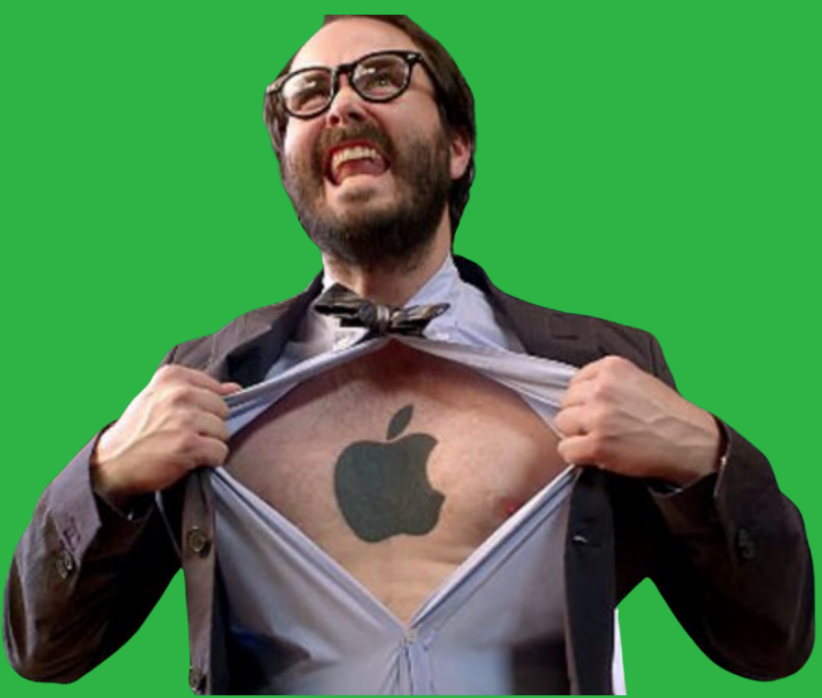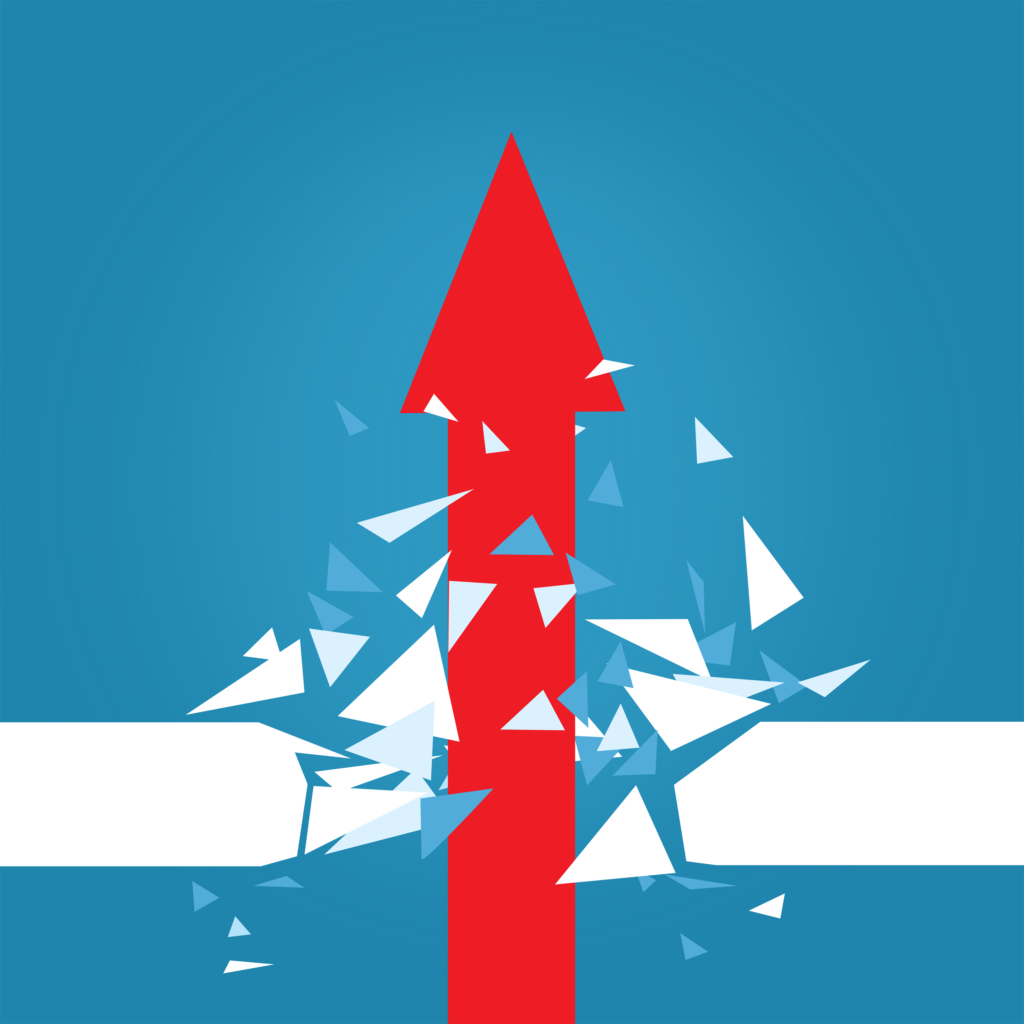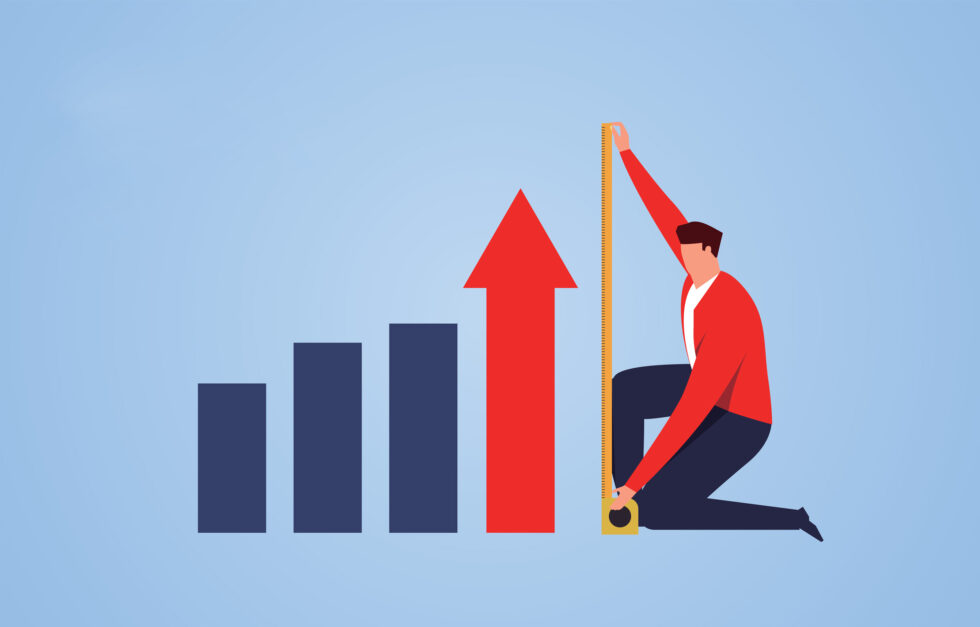Better Marketing
What’s the difference between brand and product loyalty, and what can they do for your SME?
There’s always debate over the different aspects of loyalty, and business owners can easily be confused. If you Google ‘does brand loyalty exist’ you’ll be faced with a dazzling array of opinions; and the top few hits alone capture the debate:
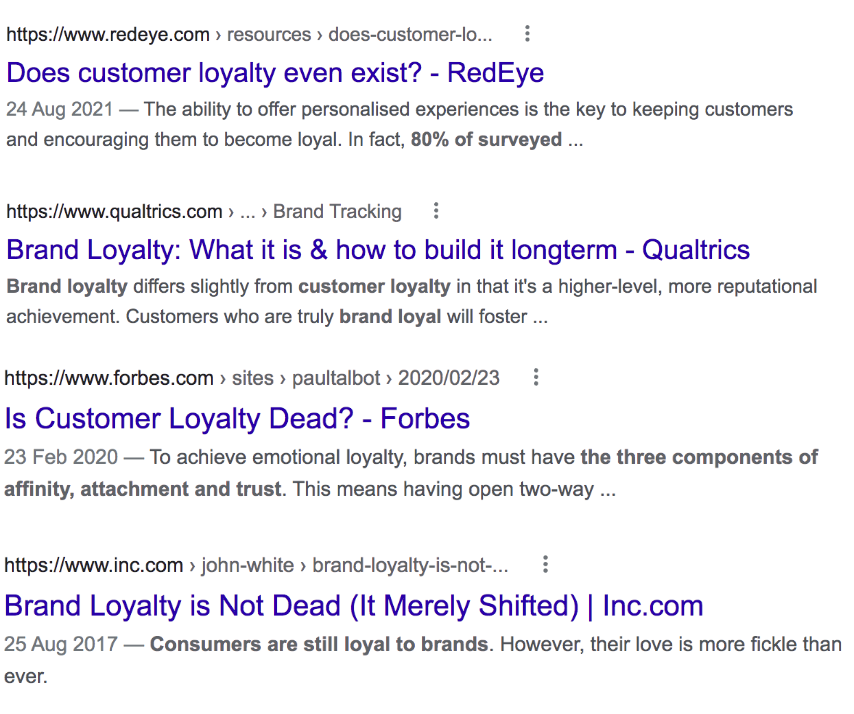
Maybe one of the most confusing aspects is the difference between brand loyalty and customer loyalty. I mean, isn’t brand loyalty a kind of customer loyalty? Of course it is.
So to cut through the BS, and help clear up confusion… here’s our simple, common-sense framework:
Customer loyalty comes in two flavours: brand loyalty and product loyalty.
Each works quite differently which we’ll clearly explain in this article – or your money back!
Next – and before we get on with those explanations – let’s welcome another dose of reality into the room, with another strong assertion….
In the real world, there are limitations to peoples’ loyalty.
Loyalty can never be taken for granted. If not tended to, it dies.
Are you loyal to a friend? Your partner? Well, yes – until you’re not! Considering 21% of men, and 13% of women have affairs at some point, loyalty, it seems, has its limits, especially over time.
Boredom with the status quo and the novelty of a new option are the enemies of loyalty.
This is especially true of product loyalty, but we’ll get to that in a minute.
Here’s another essential loyalty truth-bomb:
Experience trumps loyalty.
If every time I’ve needed a pair of running shoes for the last 20 years I’ve gone out and bought a pair of Nikes, have I demonstrated loyalty? Sure.
But if they start to hurt my feet because of a new design tweak, will I keep buying them? No, I’ll drop them in a heartbeat and buy something else.
We need to keep this in perspective when we’re discussing brand loyalty. As we said before, it can never be taken for granted.
So let’s compare the two types of loyalty we’ve identified.
What is brand loyalty?
It’s the tendency of a customer to keep defaulting to you (in preference to a competitor) based on their relationship with your brand; these customers are enamoured with the way you present yourself, your values, and the way you do things.
Because of that, these customers will be predisposed to buy just about anything from you! Which is an amazing place to get to, for any business.
And best of all, because preference is based on your brand – something that’s entirely within your control and almost impossible for a competitor to undo or copy – brand loyalty is the ‘stickiest’ or least fragile kind of loyalty. And it’s powerful enough to support a price premium.
Yes folks, that makes brand loyalty absolutely the holy grail.
Example? How can we go past Apple – great product innovation, of course, but it’s been propelled to the world’s most profitable company largely on the back of brand loyalty.
People absolutely live and breathe this brand. They’ll literally line up overnight in their hundreds to get their hands on a new iPhone. If Apple release a new product that nobody’s even heard of, will people still queue up to buy it? Yes, they will. And pay a premium for it.
Why? Sure, their products are a big part of it. But are they really THAT superior to the best equivalents? Strip away the emotion and the answer has to be no.
If Apple releases a dud product will people forgive them? Yes they will, and have.
Apple’s brand loyalty stems from SO MUCH more than just product features – it’s about coolness, colours, form-factor design, Steve Jobs, desirability and so on. (And by the way the brand was built on great advertising).
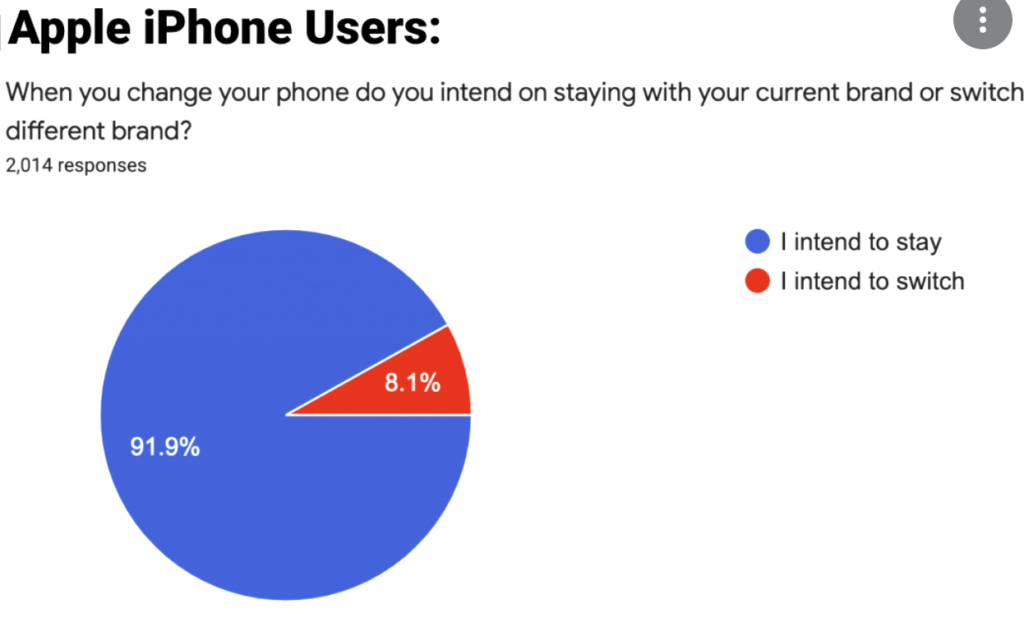
OK so what is product loyalty?
Yes, I know, it might seem kind of similar.
However the distinction we’re comfortable with is that product loyalty is more transactional and ephemeral in nature, and has less ‘holding power’ than brand loyalty.
Yes, we’re still talking about customers continuing to buy from you, but in this case it’s less that they absolutely LOVE what you do, and more because of convenience, price, or even service.
The end result is the same – a repeat purchase – but the reason for the repeat purchase is where the distinction lies. Think of it this way:
You have to earn brand loyalty, but you can buy product loyalty.
The world’s best example of a product loyalty business?
One above all others: you can’t walk past Amazon. For starters you can buy just about anything at all, at a price that’s hard to beat. And they’re prodigious users of .ai to constantly make it easier for you, suggest more relevant products and, well, probably know what you’re there for before you do!
Then, in 2005, they introduced the Amazon Prime subscription model, offering unlimited 2-day delivery on over 1 million in-stock items and now of course a streaming channel, photo storage and a host of other service to secure customer loyalty, and attempt to lock it in.
Amazon doesn’t reveal the full numbers but it’s estimated there are somewhere between 70 – 90 million members – all paying about $99 a year. Mind boggling numbers.
Are they buying your loyalty? To a certain extent, yes. However Jeff Bezos has always been very open about the fact focusing specifically on the customer, and putting them front and centre in every decision, is the key to their success (more on that in another blog here if you’re interested).
In fact he’s also said that ‘Amazon customers are loyal to the retailer, right up until somebody else offers the customer a better service.’ And he should know.
What about loyalty in the B2B world?
To state the obvious: B2B can thrive though loyalty as much as anybody.
You might think that because there’s less opportunity to create emotional brand attachment in B2B, brand loyalty in this space is harder to find. But look at it this way: B2B buyers often commit large amounts of money on a purchase. You don’t think there’s an emotional component when their job or even career might be on the line? Ever heard the old phrase “you’ll never get fired for buying an IBM” – that’s brand loyalty right there.
And that is precisely why even the new tech companies definitely invest heavily in it.
Salesforce and Adobe are both leaders and are active across both brand and product loyalty. Both offer a wide ranging product ecosystem that organisations buy into big-time. Both invite hold huge, star-studded conferences every year where the faithful are invited to be the first to hear about new product, admire the rock-star CEO and generally feel like a special part of a special community of fans.
The importance of brand and product loyalty
Now, granted, we can’t all be Amazon or Apple, but we should all, in our own way try
and encourage repeat purchases through brand and product loyalty, and if you’re in B2B you should absolutely be thinking about building a great brand that customers can be loyal to.
Here are the top three loyalty desirables:
1. Lower cost of customer acquisition
You probably know this already, but here’s reminder nonetheless. It costs five times more to attract a new customer, as it does to keep an existing customer. So why wouldn’t you?!
2. Loyal customers buy more
Repeat customers tend to buy more over time, as they’re starting to trust your business, and as they do so – your operating costs reduce too. Check out our work on a jewellery brand where our VIP program members spent 30% more on average. In diamonds!
3. Loyalty generates word-of-mouth and referrals
The more they buy, the more they talk and if they continue to have good experiences with your business, the chances that they’ll refer you increase too. According to Esteban Kolsky, 72% of customers will tell six or more people if they have a satisfying experience, and 94% of customers will recommend a company whose service they rate as very good – Qualtrics XM Institure.
The challenge: how do you build customer loyalty into your business?
How to build brand loyalty?
Whether it’s a product innovation, or a better way or delivering your service – take a leaf out of Apple’s playbook, and be consistently good. And then see if you can improve it even more. Nothing else will work effectively if you don’t get this right at the start. Once you’ve nailed product and service delivery, however, get strategic about your marketing – focus on building your brand and messaging to create more of an emotional connection with your business. On top of an amazing product or service, you’re off to the races.
How to build product loyalty?
Sticking with our distinction of this being a touch more transactional, you can build product loyalty with the above focus on excellence, of course, but you can also secure repeat purchases through exclusive offers to existing customers only, and recognise it via loyalty and awards programs.
Five steps to building B2B customer loyalty
Be very clear about your customer target – and make it as small as possible
The narrower is your focus on who you want to serve, the easier is it delight them because you can be specific to their needs and challenges. The wider the market definition the less specific can afford to be with your solution.
Incredible customer service
Make this a priority for your business, so that your customers never even think about going elsewhere. Dig deeper into their businesses too. Ask questions and find out what their problems might be in the future, and then develop solutions for them in advance.
Build personal relationships
Sometimes if a key contact moves away, you’re done. To avoid this, try to build relationships with as many in the organisation as you can, and try to work your way up the hierarchy too. The higher you can get, the better chance you have of hanging in there long term.
Work towards a referral
If you’re doing a great job and you’ve got a sound relationship with your clients, find a way to ask for the referral. Not only will this give you an opening into a new client, it will also help to cement the relationship with your existing client. They’re now emotionally engaged with your success, and even less likely to switch providers.
Introduce a customer loyalty program
Whatever makes sense for your business, formalise it, introduce a system or a program,
and go for it. Does it feel as if you’re buying their loyalty? Maybe, but if they really don’t like what you do, they’re not going to keep buying from you anyway.
If you combine all of these steps, you’ll really start to fly, and considering almost 60 percent of B2B customers have never had an experience with a brand that made them feel special – surely that’s a HUGE opportunity to truly stand out from the crowd…
Maybe we seemed a little dismissal of the entire concept of loyalty by pointing out its limitations, but make no mistake, we think it can be incredibly powerful for your business, and doing whatever you need to do to encourage people to keep buying from you is exactly what you should be doing. We just hope you’re a little clearer about how you can get there now.
So what do you think?
Are you a loyal customer yourself? Loyal to a brand? Why? What is it that makes you keep going back to those companies? And now, think about your own business. Is there room for improvement?
If you’d like to chat about all of this, and where it can fit into a marketing program just let us know. But don’t expect us to trot out the obvious, we’ve built brands and developed loyalty programs for all kinds of companies, and we know two things: 1. There are no silver bullets (which is why everything we do is bespoke) and 2. The work we do can really help businesses identify what’s exceptional about their brand and how to tell the world about it – and that’s the start of the customer loyalty journey.
